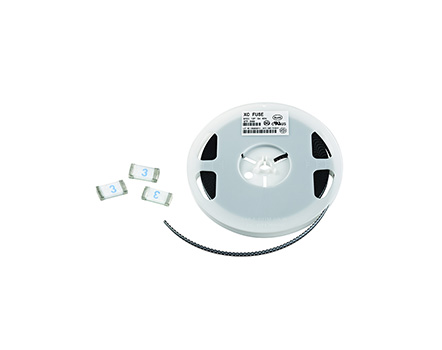
Fuses (patch type fuses), also known as fuses, as the name suggests, are used to protect circuit components. When the current exceeds the specified range of the electrical appliance, the fuse will heat up and blow, thereby achieving the purpose of cutting off the current and protecting the electrical appliance. Supplementary knowledge on purchasing chip type fuses: 1. The working current of the selected chip type fuse should not exceed 75% of the rated current of the fuse. 2. The impact resistance of patch fuses is much smaller, so when purchasing patch fuses, special attention should be paid to pulse, impulse current, surge current, starting current, and circuit transient values. 3. Confirm the size of the circuit overload current that the patch fuse needs to pass through and the minimum and maximum duration of the overload current. 4. Another characteristic of patch type fuses is that by installing fuses with excessive internal resistance in certain circuits, they can affect the system parameters of the circuit and prevent it from working properly. 5. When the protective patch type fuse is applied to portable devices, the working voltage of the circuit is generally not high, but the temperature rise of the fuse should be appropriately considered because it is sensitive to changes in environmental temperature. The normal working current rating of the fuse is usually reduced by 25% to avoid harmful blowing; The voltage rating must be equal to or greater than the effective circuit voltage, and the standard voltage rating series are 24V, 32V, 48V, 63V, 125V. Generally, the maximum current during normal operation of the circuit should be calculated based on the total power of the electrical appliances connected to the circuit, and then a fuse should be selected so that its rated current is equal to or slightly greater than the maximum current during normal operation of the circuit. For appliances with electric motors such as washing machines and refrigerators, due to the fact that the current when the motor starts is much higher than during normal operation, the rated current of the fuse is generally chosen to be three times the normal working current of the motor. In practical applications, if there is only a thin fuse that does not meet the specifications, two or more strands can also be used in parallel as needed. However, it is not allowed to blindly increase the capacity of the fuse by arbitrarily thickening it, and other metal wires such as thick copper wire, iron wire, or aluminum wire cannot be used to replace the fuse. After the fuse burns out, the power should be disconnected first to check the circuit, eliminate the fault, and then replace the appropriate fuse.
Read recommendations:
bs 1362 fuse operation characteristics
Safe use of electricity, safety of fuses.slow blow fuses near me